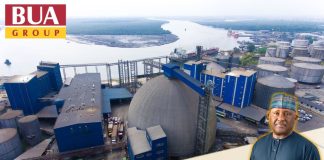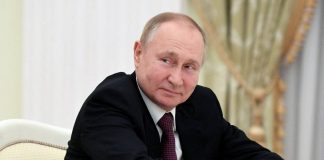In attendance was President Vladimir Putin of Russia and the Prime Minister of the Republic of Iraq, Muhammed Shia Al Sudani. This 2023 forum is the sixth Russian Energy Week and the Event’s central theme is “The New Reality of Global Energy: Building the Future”. Attendees were over 4,000 delegates from more than 60 countries including representatives of governments, CEOs of major energy companies and organizations, scientists, and experts. The Event took place from October 11 to 13, 2023 in Moscow.
President of Russia Vladimir Putin’s address:
Mr. Prime Minister of the Republic of Iraq, Ladies and gentlemen, Friends.
I would like to greet the participants and guests of Russian Energy Week. For the sixth time, here in Moscow, this forum has brought together the heads of the leading energy companies and research institutes, politicians, and experts from Russia and abroad so they can assess the trends of and prospects for global energy, exchange opinions on the challenges the global fuel and energy sector faces and discuss how to ensure the long-term stability of the planet’s energy markets.
This is especially important today when the global economy is transitioning to the multipolar model with several growth centres, and the place, role, and importance of each country is defined by how it responds to these deep, irreversible processes and how efficiently it can defend its economic, industrial, technological and energy sovereignty, readjust investment, trade and cooperation ties.
The Russian economy is also undergoing this stage of structural transformation. The geography of foreign trade, as well as employment and the situation in the sector, are changing. New market prospects for small and medium-sized businesses are emerging. The Russian fuel and energy sector is also seeing core changes. They relate to all areas of the industry, including the production and processing of energy commodities, service, and logistics, as well as interaction with our foreign partners.
Today, I would like to delve into four key elements of this transformation, which consider external factors but are, in my opinion, of a fundamental nature and are part of our country’s sovereign, long-term strategy.
First, our basic priority is to ensure supplies to the national market and to ensure sufficient supply of fuel and energy resources within the country. I would like to emphasize that this not only concerns the current needs of our businesses and citizens. We will be working consistently on the quality development of our market and on expanding its capacity. We have huge potential for this.
A positive example in this sense is our gas industry. I would like to remind you that we launched a nationwide gas supply social program in 2021. Its goal is to connect every house in the villages and cities that have gas mainlines to the gas grid.
In the first few years of the program, we have created the technical infrastructure for connecting over a million households to the gas grid and have already connected 375,000.
Last year, we agreed the program would continue indefinitely. Moreover, we have expanded it to include outpatient clinics, hospitals, and schools where the heating system can be converted to gas.
During Russian Energy Week held a year ago, I proposed giving targeted assistance to people who wanted their private houses to be connected to the gas grid. The government will subsidize spending to purchase equipment and lay pipes on their land plots for up to 100,000 roubles per household.
About 52,000 citizens entitled to benefits have taken advantage of this opportunity, including large families and low-income people, who could connect their houses to the gas grid quickly and relatively cheaply, which made their lives easier and more comfortable.
I propose expanding the list of citizens with access to subsidies for purchasing and installing gas equipment by adding to the list of participants in the special military operation and their families, people with the most severe disabilities, and families with disabled children.
I would like to add that we have launched several strategic projects to develop the country’s gas pipeline system. They are aimed at increasing the availability of natural gas for companies, industrial facilities, cities, and towns.
There is a plan to connect the gas pipeline systems in western and eastern Russia. During the first phase of this project, we will connect the Power of Siberia and Sakhalin – Khabarovsk – Vladivostok gas pipelines, and then we will connect them to the country’s unified gas supply system. Along with building the Power of Siberia-2 pipeline, this will make it possible to supply gas to many regions in Siberia and the Russian Far East.
We regularly discuss the progress of these plans with the Government and with companies, including at meetings on developing Far Eastern cities. The so-called master plans have been drawn up for the development of cities in Yakutia, Buryatia, the Khabarovsk, Primorye, and Trans-Baikal territories, the Amur Region, and the Jewish Autonomous Region, as well as for Krasnoyarsk.
A project has been launched to install an LNG-based public gas supply system in the Kamchatka Territory. The Murmansk Region and Karelia will be connected to an offshoot of the Volkhov – Murmansk – Belokamenka gas pipeline. The pipeline will be laid for an LNG project on the Kola Peninsula. But part of its capacity, namely up to 10 billion cubic meters per year, will be used to supply gas to industrial and social facilities, and residential buildings in Karelia and the Murmansk Region, and to develop environmentally friendly power generation.
I would like to note that last year, Russia had record-high energy consumption, and there is reason to believe that it will be broken this year. One does not have to be an expert to know that, if energy consumption grows, it means the economy is growing. This conclusion has been confirmed by other data as well.
I would like to stress that this is a qualitative, integrated indicator that reflects positive trends in the Russian economy and social sphere. The number of consumers is growing; new production facilities and infrastructure facilities are opening, providing new jobs, and this propels electricity demand.
In this regard, we will consistently improve the reliability of energy supply to the regions. Power grids and power lines must operate smoothly and sustainably and allow a reserve for the further development of territories. At the same time, we will pay special attention to improving the energy efficiency of industry, utilities, and transport.
Let me remind you that we have drawn up plans to upgrade the power grids in the regions where it is most badly needed. I will not list them now, but there are about ten such regions.
I would like to remind the Government that all regional programs to this effect must be funded in full. Federal budget funds have been earmarked to support such programs.
Additionally, stability and affordable prices for electricity, raw materials, and fuel are critical conditions for ensuring the confident, long-term development of the energy market.
As you may be aware, we have run into a surge in gasoline and diesel fuel prices in recent months. To address this issue, the Government has taken a series of measures to bring the situation back to normal.
I once again draw the attention of our leading energy companies to the importance of prioritizing fuel supplies for our domestic consumers. I urge the Government to act proactively and implement preventive measures before the situation escalates.
Maximising added value and advancing the deep processing of oil and gas is the second strategic and systemic objective of the Russian fuel and energy sector.
We have made substantial progress in this area. Ambitious oil and gas-to-chemicals projects, including projects with state participation and state support, are in the planning and implementation stages.
A petrochemical plant has been launched in Tobolsk. The Amur Gas Processing Plant is expanding its capacity. The LNG production and gas processing complex in Ust-Luga and the Amur Gas Chemical Complex are both under construction.
It is crucial to continue to support such projects and further bolster the potential of economic sectors such as large-tonnage polymers, medium- and low-tonnage chemistry, and oil refining where considerable modernization efforts are underway.
Let me stress: Russian fuel and energy complex projects are increasingly based on domestic technology, equipment, machinery, and software.
This leads us to the third dimension of the structural transformation in the fuel and energy complex. It is about achieving complete sovereignty within the industry, including technological, personnel, and financial sovereignty. We will need to drastically increase the volume and share of Russian-made equipment, especially critical equipment, to raise the level of training of qualified personnel to a new level and, of course, to form our mechanisms for financing investment projects.
Notably, we are continuously working to create and introduce domestic machinery and equipment for the oil and gas sector and power transmission.
Since 2014, we have been successfully producing over 140 types of equipment, including drilling and hydrocarbon production equipment, heat-transfer equipment, catalysts and agents, high-voltage cables and switches, and much more.
Let me remind you that we, along with our colleagues from the Government and the oil and gas companies, agreed to form major integrated orders for Russian-made machinery and equipment. We need to consolidate the efforts and resources of the state, private business, and development institutes in every innovative area that is needed by the fuel and energy sector, first of all.
For instance, VEB, along with Skoltech and service companies, are working on investments in projects related to the manufacturing of oil and gas production equipment, including equipment for the development of difficult-to-recover deposits.
I know that this is a complex, difficult task. It is necessary to understand the interests and needs of the sector, both current and long-term. Nevertheless, I ask the Government to expedite this work and create a long-term order package for the developers and manufacturers of equipment for the fuel and energy sector.
I also would like to ask you to expedite the transition from foreign to Russian-made standardization and certification systems for the oil and gas, and the petrochemical sectors. This will help give an additional boost to import substitution in the energy sector.
I want to mention software as well. Our fuel and energy companies are already working on introducing Russian software and solutions.
I want to point out that when deploying Russian software, it is very important to ensure operational continuity at production facilities, consider all the risks and, of course, adopt the most successful and advanced practices.
We already have examples to follow. I am talking about the nuclear sector, which has been increasing its role in Russia’s energy balance. It accounts for some 20 percent of all electric energy in the country, and a new production record was set by our nuclear power plants last year.
The Russian engineering school is not just strong in terms of construction and maintenance of nuclear power facilities, but it has very little competition at the global level. Rosatom is building 22 power units abroad simultaneously, I want to reiterate, simultaneously. This is almost 80 percent of the global market. This includes the Akkuyu Nuclear Power Plant in Turkiye, which is the first foreign project that our experts will help to implement and maintain during the entire life cycle from design to decommissioning.
Last week, fuel was loaded into the Rooppur power plant in Bangladesh. The fourth power unit at the El Dabaa NPP in Egypt is being built ahead of schedule. This is our flagship project on the African continent, but it is not limited to the construction of the facility. We are cooperating with Egyptian specialists and our friends from Egypt to develop the nuclear energy industry in that country from scratch, which includes training personnel, providing maintenance support, and so on. In other words, we are helping Egypt embark on the path to sovereign energy development.
This integrated and systemic approach is one of Rosatom’s main competitive advantages, not to mention its traditionally high safety and reliability standards.
To reiterate, Russia is fully independent in terms of technology, both at the construction stage and during the maintenance of nuclear power plants. At the same time, we are not against the participation of companies from third countries in the construction of nuclear power plants that we have designed.
Importantly, Russia is expanding to new areas of nuclear generation such as low-capacity onshore and floating nuclear power plants. The first floating facility, the Akademik Lomonosov, began operating in Chukotka in 2020. Four more such power units will be deployed there shortly. Russia’s first low-capacity land-based nuclear power plant is under construction in Yakutia.
The hydroelectric power industry is another example of the successful development of domestic competencies. The accumulated experience, own technological solutions, as well as the unique potential of Russia’s water resources open up great opportunities for the construction of hydroelectric power plants, which will supply inexpensive and fully green energy to cities and towns, industrial and agricultural facilities, and homes.
By developing hydropower, we will be able to make progress in addressing the issue of seasonal floods. Runoff regulation and accumulation of flood water in HPP reservoirs will not only reduce losses from natural disasters but also create high-volume reserves of clean water, one of the most sought-after resources in the world.
I would like to add that Russia’s RusHydro has been involved in designing and building more than 350 facilities in 54 countries. Today, the company supplies its technological solutions to 17 countries, including countries in Africa, the Middle East, Central Asia, and Latin America, boosting technology transfer and providing engineering support for the entire service life of its plants, which is 50–70 years. That is, the company enters into long-term contracts, which help to establish strong ties not only between companies but also between countries.
I urge the relevant ministries and agencies to provide extensive support to our companies engaged in building energy projects abroad, exporting engineering and related services in this sector, and venturing into new markets.
This leads us to the fourth dimension of transforming our fuel and energy sector, which is directly tied to new export prospects and destinations.
As you may be aware, the European countries have effectively turned down our energy. Not yet entirely, but they have been trying to. For many years, these resources have played a significant role in ensuring the economic and social prosperity of the European Union. Perhaps, not entirely, but our energy accounted for much of their well-being. Recent restrictive measures have been imposed on banking services, freight, and insurance, and price caps have been established on our oil and gas.
I will leave the impact of these decisions on the European countries themselves off the table for now, although I may come back to it later. They are now paying more for oil, refined products, and natural gas. As a result, the EU’s economy is hovering near the zero-growth mark, and industrial production has been in the negative since March.
According to our experts, there is only 0.5 percent growth in the Eurozone, which can primarily be attributed to Italy and Spain. It remains to be seen why these economies are seeing some growth; it may be related to real estate sales and the post-pandemic recovery of the tourism sector. Overall, the industrial sector is experiencing a decline which impacts the entire economy. Industrial output dynamics in the EU for July showed a decline of 2.4 percent; energy output dropped by 4.7 percent and for the first half of this year there was a 5 percent drop.
These developments have impacted household incomes. Real disposable incomes in the Eurozone for the first quarter of this year (quarter to quarter, from 2023 to 2022) fell by 1.2 percent. I would like to remind you that, in the Russian Federation, there was a 4.4 percent increase during the same period, and in the second quarter, there was a 5.3 percent increase. These are the actual disposable income growth rates in Russia.
The baselines are different, but the trend is what matters. It reflects the quality of economic policies. Sometimes I look at them and wonder what they are doing there. Well, it’s their choice.
Notably, the Russian fuel and energy complex is operating steadily. Production and financial indicators are strong. Thanks to corporate and public efforts, the tanker fleet has expanded, and new payment, insurance, and reinsurance mechanisms for our cargo have been put in place.
As a result, within a short period, we have successfully redirected our oil supplies to rapidly growing and promising markets in other regions of the world, namely, the South and the East.
According to experts, the combined contribution to the global economy by the five largest Asian economies – China, India, Indonesia, Malaysia, and Vietnam – has surpassed the aggregate share of the United States and all EU countries together. This gap is expected to widen in the coming decades, there is no doubt about it. In the case of China and the United States, projections indicate that by 2028 China’s share in the global economy will increase to 19.7 percent, while that of the United States will decrease to 14.5 percent based on purchasing power parity, of course.
To expand our exports to the Asia-Pacific region, Africa, and Latin America, the Government has a plan for developing the Russian oil export infrastructure. I strongly encourage our colleagues to approach the execution of this plan with the utmost sense of responsibility.
The logistics are of critical importance for our coal industry as well. Alongside the expansion of the Eastern Operating Domain, that is, the Baikal-Amur Mainline and the Trans-Siberian Railway, a range of new transport projects is being developed. These projects will enable us to flexibly manage coal shipments through the ports of the Russian Far East and the ports in northwestern and southern Russia.
Furthermore, I would like to say that some actions by our colleagues, particularly the Western elite, have, of course, wreaked havoc on the global energy market, including the oil market. The negative consequences of such politicized moves affect the entire global economy.
Now, we have to redress the balance, and it falls upon responsible market participants to do so. To ensure stability in the oil market, major suppliers must act in concert on open and transparent terms. This is how Russia is working with its partners within OPEC Plus.
We primarily rely on the objective market-driven dynamics of oil supply and demand and the industry’s investment programs. This is why the OPEC Plus countries fully act on their commitments and are effectively addressing all challenges.
I am confident that our OPEC Plus partners will continue to coordinate their actions. This is crucial for oil market predictability and, ultimately, for the well-being of all of humanity, since economic growth and therefore, people’s prosperity is dependent on the global energy sector.
Furthermore, Russian gas and coal companies are also rerouting supplies from the Atlantic market to the Asian market. This is a natural process, rather than some opportunistic decisions. This process is also determined by long-term market trends, rather than geopolitical intrigues. I have just noted economic growth trends in various regions, and this is what we are guided by. Of course, we are forced to respond to geopolitical challenges, but we are guided by these objective trends, first and foremost.
I would like to note once again that, according to experts, natural gas demand will soar in all regions, except North America and Europe, until 2050. The share of Europe in global demand will more than halve to five percent. Incidentally, the share of Asia will increase by 50 percent, from 21 percent to 30 percent.
Russia continues to export more gas to the People’s Republic of China. In 2025, the Power of Siberia gas pipeline will reach its design capacity of 38 billion cubic meters of gas annually. However, it already transports substantial gas volumes exceeding contract obligations.
Last year, we signed a contract for the Far Eastern route to China. It will supply ten billion cubic meters of gas annually. We are discussing other promising projects, including gas transportation via Mongolian territory.
I would like to add that, last week, our colleagues joined us in launching Russian gas deliveries to Uzbekistan via the Central Asia–Centre gas pipeline that passes through Kazakhstan.
This joint project of Eurasian magnitude will allow clients in Uzbekistan to obtain inexpensive and environmentally friendly fuel via a reliable route. Kazakhstan will be able to pump gas to its northern and eastern regions, and Russia will expand its presence in dynamic Central Asian markets.
I believe that this is a good example of energy and infrastructure cooperation that benefits all participants. Consequently, our colleagues from Kazakhstan and Uzbekistan have agreed to work with us to examine further energy supply projects for these countries.
Liquefied natural gas plays an important role in the global energy market. LNG supplies are not tied to specific consumers, and the market can respond more flexibly to changes.
Next year, LNG terminals will operate in 55 countries. According to estimates, by the end of the decade, the demand for LNG in the world could grow by about 50 percent, up to 600 million tonnes per year.
On the other hand, competition in this segment will certainly increase. Projects have already been announced that will double the total LNG production capacity in the coming years.
Russia also has ambitious plans for LNG. In the next decade, LNG production should triple to 100 million tonnes per year. The investment in LNG will be over six trillion rubles.
The Russian projects need to realize their competitive advantages on the market, including efficient logistics, and this includes the potential of the Northern Sea Route, as we all know, and those new ports and transport hubs that are being developed in the Arctic.
Today, we are dealing with restrictions on the supply of technology and equipment, as well as LNG ships. However, I would like to repeat that, to mitigate these risks, we need not only to cooperate with friendly countries but also to expedite the development of our solutions and the opening of new production facilities. And this is what we are doing.
For example, the new Offshore Superfacility Construction Centre has launched in Murmansk. The first floating platform for gas liquefaction – the first line of the Arctic LNG-2 project – is already in the production area; it is in the start-up and shakedown phase now. The Murmansk plant has secured a solid portfolio of orders, which means that the company and its staff will be reliably provided with work.
Friends,
Despite the challenges and difficulties facing the Russian fuel and energy sector, our companies are growing. They are confidently ensuring national energy security, laying the foundations for our long-term plans for the development of the economy, industry, agriculture, territory, transport, and infrastructure, and improving the quality of life for the people of the Russian Federation.
As before, Russia will make a significant contribution to balancing the global energy market, developing partnerships and cooperation ties with those countries that want it and are interested in this.
I am confident that this effort will benefit all participants and guarantee the prosperity of our nations for many, many years to come, but this certainly cannot be achieved without your active and energetic participation.
Thank you for your attention.
Disclaimer:
The opinions and views expressed in this write-up are entirely those of the Writer(s). They do not reflect the opinions and views of the Publisher (Nze Ikay’s Blog) or any of its employees. The designations employed in this publication and the presentation of materials herein do not imply the expression of any opinion whatsoever of the Publisher (Nze Ikay’s Blog) or its employees concerning the legal status of any country, its authority, area or territory or concerning the delimitation of its frontiers. Equally, the sketches, images, pictures and videos are gotten from the public domain.










interesting post
thank you very much
Hey very nice blog!
Look into my website – https://gesdwertago10.com
Pretty! This has been an incredibly wonderful post. Many
thanks for supplying this information.
Here is my web page – http://fesgiopesder21.com/
Hey very nice blog!
Look into my website – http://fesgiopesder21.com/
I visit every day some sites and information sites to read
content, however this blog presents quality based posts.
my page: текст ссылки
Hey very nice blog!
Look into my website – https://dgfhyeidjmdk4.com/